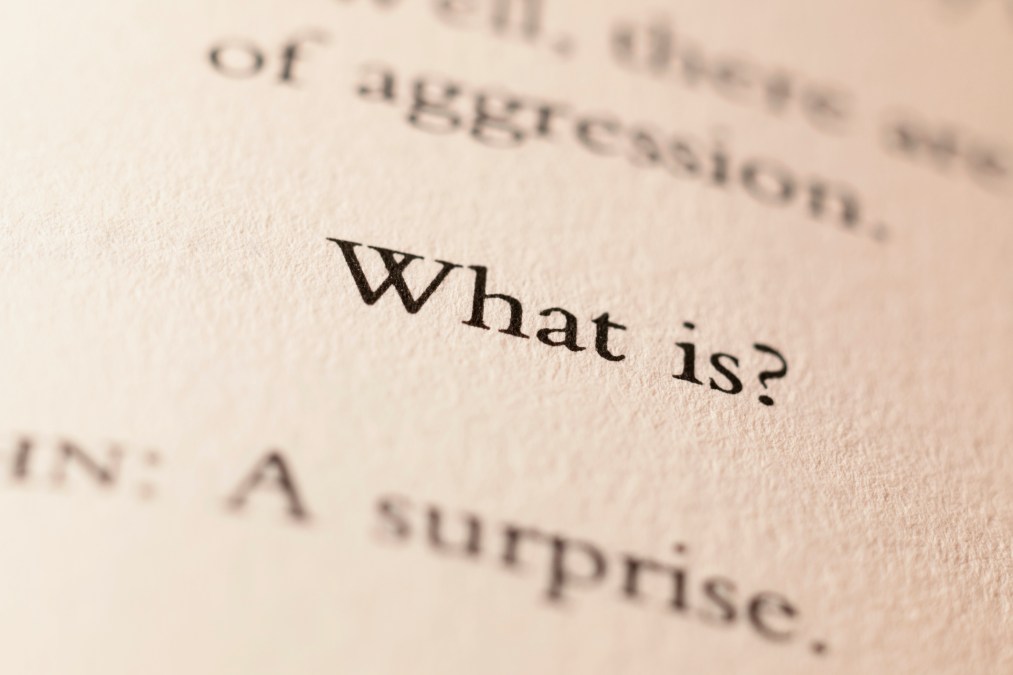Study links large print with improved reading comprehension

A recent study conducted across 15 schools with large populations of low-income students is boasting that reading comprehension and engagement can be boosted substantially by increasing the size of the typeface in classroom reading materials.
The research was conducted by Project Tomorrow, a nonprofit education organization commissioned by Thorndike Press, a publisher of large-print books. The findings include a broad range of benefits including reduced anxiety, improved concentration, heightened enjoyment and higher levels of information comprehension and retention.
The study is the latest in a body of research into the link between typography and cognition that leaves many questions unanswered.
The research also comes to the classroom in an age when the media and modes of delivery available to students are more varied than ever. Between e-book readers, tablets, mobile devices, computers and traditional printed materials, matters of how content should be presented visually — as opposed to structurally or the quality of the content itself — frequently go unquestioned.
Julie Evans, Project Tomorrow’s CEO, said her group discovered that the size of typeface makes a huge difference with young readers and that it’s a topic that should get more attention.
To understand how larger print could affect reading in the classroom, the researchers swapped out titles such as “The Outsiders,” “I Am Malala” and “Hatchet” with large-print versions of the same works. Participants included 56 teachers and librarians and 1,696 students in grades 3-12. Ten of the 15 schools involved have student populations that are more than 50 percent African American and/or Hispanic, and all of the schools qualify for Title 1 funding, which is disbursed to schools with high percentages of students who come from low-income families.
Evans herself conducted five focus groups as part of the research, attempting to understand how the introduction of larger print changed the attitudes of students, teachers and librarians involved.
“It was widely valued by the students and the teachers,” Evans told EdScoop.
In a series of surveys, focus groups and interviews, 43 percent of students reported reduced feelings of anxiety when reading books in large print. How students feel about reading is critical, Evans said, because even some students who reported enjoying reading in their free time said they didn’t like reading in the classroom because it felt like work. A small typeface is less welcoming and may overwhelm students, particularly those who are struggling with reading, Evans theorized.
In grades 6-8, 60 percent of students said they thought large print made it easier to focus and not lose their place from distractions. Among students in grades 3-12, 54 percent said they thought reading in school would be more enjoyable if all books were made available in large print.
“Students were explaining to me what large-print books were like,” Evans said. “They were explaining to me that in the large-print book there are more details than in the books with traditional print.”
But the large-print books didn’t have more details — they were the same. Students were reading the large print more closely and not missing things they’d missed before.
“They think there’s more details because they’re not losing their place, they’re not skimming,” Evans said. “That’s a really interesting statement about comprehension.”
This wrinkle links to the study’s boldest claim, which is that large print can boost reading comprehension and accelerate student progress. At one school involved in the study, middle school reading levels increased by 2-3 times the average recommended growth while using large print books.
About 75 percent of teachers in the study said students who had been reading below grade level demonstrated increased reading comprehension and better retention when reading large print books. For this metric, the study relied on the measurement techniques already employed by each teacher to gauge students’ reading levels.
Evans said the teachers were convinced by the study, with 95 percent of teachers surveyed saying they plan to use large-print texts with their students for the upcoming school year.
Go big or go small
But many other studies have been conducted to understand how varying font size, line spacing, font style and other visual elements can influence learning outcomes, and taken together the results are less clear than what’s presented in the Project Tomorrow study.
A 2018 study published in Frontiers in Psychology exploring how type size affects memory found that both children and adults had an easier time remembering words printed in a large font. But research published in the journal PLOS One in 2013 found that presenting reading passages in a small font size decreased reading comprehension among second graders while increasing comprehension among fifth graders.
For reading speed, type size is thought to be critical. Smaller fonts, researchers have found, are typically only used when tied to economic or social constraints, as seen in classified newspaper advertisements or the Bible. But most of the type found across popular media today, from newspaper headlines to the print in hardcover and paperback books, falls into the sweet spot for optimal adult reading speed.
Despite the importance of a type’s legibility for reading speed, some studies have found that degrading a text in some fashion can increase comprehension. The results of 11 experiments published in Memory & Cognition in 2018 found “a U-shape relationship between font size and memory.” People were better at remembering words that were presented very large or very small, compared to words in the intermediate range. Research published in the journal Cognition in 2010 found that using atypical or difficult-to-read fonts — such as Comic Sans MS, Bodoni MT or Monotype Corsiva — boosted the test scores of students compared to those who’d studied using materials printed in a normal typeface.
For some students, particularly younger students, a large typeface may be ideal, but the characteristics of increased comprehension and retention associated with large, small and unusual typefaces indicates the key to optimizing classroom reading doesn’t lie simply in making fonts larger, but also in doing something to the font that leads the reader to pay closer attention.
Evans said that large print accomplishes this aim well, and with minimal disruption in the classroom. She said her research also uncovered no stigma among students associated with the large-print books — which are comparable in size to the standard-print versions, thanks to smaller margins, letter spacing and other tricks — and that teachers don’t need any special training to make the additional option available.
“If there’s something about this large-print book that engages students and helps them with reading comprehension, that’s pretty significant,” she said.




